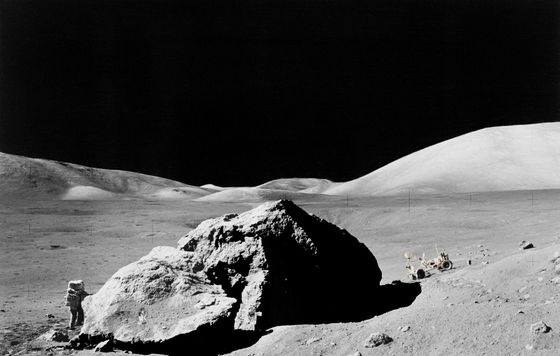Research to extract water from moon rocks is underway, scientists say that the era of human beings living on the moon is coming soon

In 1970, Neil Armstrong, the first man to stand on the moon, predicted, ``People will come to live in lunar exploration bases while we are alive.'' Armstrong's prophecy, who died in 2012, did not come true, but the research toward its realization is steadily progressing, according to the British big letter The Guardian.
Moon rivers? UK scientists at heart of mission to extract water from lunar rock | Space | The Guardian
Professor Mahesh Anand of the Open University of England is a scientist who is conducting research for future humankind's advance to the moon. Professor Anand's research area is the development of technologies that will enable humans to live in self-sufficient research stations on the Moon and use them as a springboard to explore more distant planets, such as Mars.
On his thoughts on the moon, Professor Anand said, ``The moon is our closest celestial body, and we can see it directly on a clear day. There is nothing more wonderful than finding out if there is something there. There are still many mysteries about the moon, and learning about it will help us understand the history of the Earth.”

by Open University
Professor Anand and his research team have continued to study
The results of this study are consistent with previous observations of the presence of ice in the lunar polar regions.
Direct evidence that there is ice on the moon is found - GIGAZINE

And as the next step, Professor Anand and his colleagues will launch a device called `` exospheric mass spectrometer '' designed by themselves in the 2024 Artemis plan aiming to send mankind to the moon again. We plan to make a hole in the bedrock of the moon and collect water.
The technology to obtain water from lunar soil is essential for mankind to advance to the moon. Because it costs an estimated $ 1 million (about 130 million yen) per kg to carry things from the earth to the moon, it is much more cost-effective to procure locally.
Simeon Barber of the Open University, who leads the device development team, said, ``If you can find the resources to live locally, you can reduce the size of your luggage.''

Professor Anand and others are also conducting research on equipment that melts the moon's soil with microwaves and molds it with a 3D printer to create a living space, and research on growing plants with volcanic ash similar to moon sand. .
Behind the growing momentum for advancing to the moon is the rise of countries such as China in the field of space development. The Apollo program was also carried out in the midst of a space race with the Soviet Union. As such, researchers hope that the Artemis project will be more international collaboration and science-driven.
Roland Trautner of the European Space Agency (ESA) believes that manned lunar landing missions will begin within a few years, and that a research station will be ready to host visitors to the moon in 2040-2050. Trautner told The Guardian, ``I think we're entering a new chapter in lunar surface development for the first time since the end of the Cold War. It's an exciting time for lunar exploration and scientific research. It's no surprise, it's natural for the human species to want to take the next step.'
Related Posts:
in Science, Posted by log1l_ks







